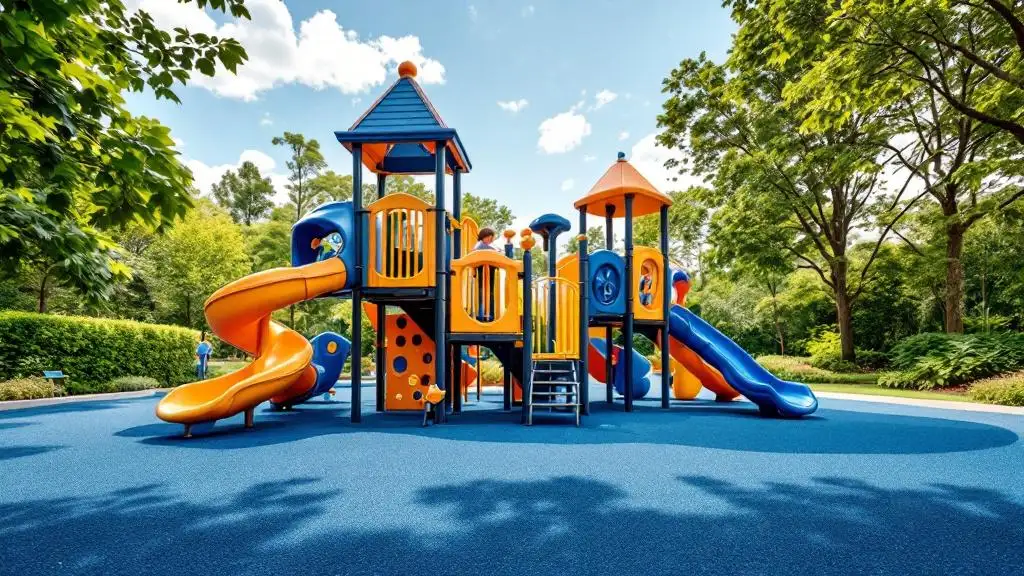
Understanding the Impact of Physical Therapy on Children with Autism
Children with autism spectrum disorder (ASD) often face significant challenges in developing motor skills, which are crucial for their independence, social participation, and overall well-being. Recent research and clinical practices highlight the importance of physical therapy as an effective intervention to support and improve these motor difficulties. This article explores how structured physical therapy programs, evidence-based studies, and targeted techniques contribute to better motor outcomes for children with ASD.
Evidence-based Benefits of Physical Exercise in Autism Interventions

What are the benefits of physical therapy for children with autism?
Physical therapy provides a range of advantages for children on the autism spectrum. It helps improve their gross motor skills, such as strength, balance, coordination, and motor planning abilities. These skills are crucial for safe and confident movement, allowing children to participate more fully in daily activities and social interactions.
Through engaging in structured, play-based activities like obstacle courses, swinging, and balance exercises, children develop essential skills such as sitting, walking, and running. This not only increases their independence but also enhances their posture and overall body control.
Beyond physical improvements, therapy promotes emotional and psychological well-being by releasing endorphins that reduce stress and lift mood. Better physical health can also lead to improved sleep patterns.
Physical therapists collaborate with parents and teachers to develop personalized programs. They guide caregivers on integrating physical activity into routines, fostering continuous progress. Overall, physical therapy is a vital part of a holistic approach, supporting children’s developmental milestones and helping them reach their full potential.
The Crucial Role of Occupational Therapy in Motor Skill Enhancement

What activities are recommended to develop fine motor skills in children, including those with autism?
Developing fine motor skills in children, particularly those with autism, benefits greatly from both structured and spontaneous activities. These activities focus on strengthening small hand muscles and improving coordination essential for daily tasks.
Common activities include threading beads, lacing cards, peeling and sticking stickers, and cutting out shapes. Building with blocks, assembling puzzles, and modeling clay exercises also promote dexterity and hand-eye coordination.
Sensory-rich activities are equally beneficial. Finger painting, water play, and manipulating textured materials provide tactile stimulation that enhances fine motor control.
Tools like tweezers, clothespins, and scissors are incorporated to improve precision grip and bilateral hand coordination. Repetition, visual cues, verbal instructions, and positive reinforcement are critical, especially for children with autism, to motivate engagement and mastery.
Occupational therapists customize these activities to match each child's developmental level and specific needs, ensuring effective progress in fine motor skills that support independence.
What is the significance of occupational therapy in improving daily motor skills for children with ASD?
Occupational therapy (OT) is vital in helping children with autism improve various motor skills necessary for everyday life. Children with ASD often face challenges with motor planning, muscle tone, posture, and sensory processing.
PTs and OTs work together to design interventions that target skills such as handwriting, dressing, eating, and grooming—activities requiring precise coordination and strength.
Therapists use engaging activities involving tactile media, manipulatives, and self-care practice to foster motor development. These activities are gradually adapted to increase complexity, encouraging independence and confidence.
Regular participation in OT interventions leads to better coordination, improved muscle control, and enhanced sensory regulation. Overall, occupational therapy not only boosts motor functions but also promotes participation in social and daily activities, greatly improving quality of life.
Additional Insights into Occupational Therapy Interventions
Numerous techniques are employed, including sensory integration approaches, activity-based routines, and play therapy. These strategies are tailored to each child’s unique sensory profile and motor challenges.
Interventions may incorporate hands-on activities like finger dexterity exercises, bilateral coordination tasks, and the use of assistive tools. The use of visual supports and clear instructions helps children understand and participate actively.
Family involvement and environmental modifications further enhance the effectiveness of occupational therapy, facilitating skill transfer into home and school settings.
By focusing on functional and meaningful activities, occupational therapy equips children with autism to develop vital motor skills, increasing their independence and confidence in daily life.
| Activities for Fine Motor Development | Techniques Used in Occupational Therapy | Importance of Individualized Interventions |
|---|---|---|
| Beading and lacing | Sensory integration strategies | Tailoring activities to child’s unique needs |
| Cutting and shape sorting | Play-based approaches | Customizing tools and routines |
| Manipulating textured materials | Visual and verbal cues | Progressively increasing complexity |
| Using tools like tweezers and scissors | Repetition and positive reinforcement | Supporting family involvement |
| Water and finger painting | Task analysis and support strategies | Enhancing motivation and independence |
Enhancing motor skills through occupational therapy requires a holistic, individualized approach. It combines engaging activities with tailored techniques that respect each child's pace and preferences, ultimately fostering greater independence and participation in daily activities.
Physical Therapy: Supporting Motor Milestones and Functional Movement

What is the role of physical therapy in supporting motor development in children with autism?
Physical therapy holds a vital position in helping children with autism develop essential motor skills. It focuses on building muscle strength, improving posture, and enhancing balance and coordination. Through structured activities and tailored exercises, physical therapists guide children in mastering movements crucial for daily life, like sitting, standing, walking, and running.
These therapies are designed to address common motor challenges faced by children with ASD, including delays in coordination, balance issues, and motor planning difficulties. When integrated early—ideally during preschool years—physical therapy can leverage the brain's plasticity to foster significant improvements.
Although research continues to evolve, current evidence indicates that individualized physical interventions can support better functional movement, participation in play, and social interactions. This makes physical therapy a fundamental element in comprehensive autism treatment plans, aimed at enhancing overall development and independence.
Techniques and Strategies Used in Physical Therapy for Autism
What techniques are commonly used in physical therapy to support motor development in children with autism?
Physical therapy for children with autism incorporates a range of methods aimed at enhancing both gross and fine motor skills. Therapists often employ structured, play-based exercises that focus on improving fundamental movement abilities such as walking, jumping, balancing, and coordination.
Common gross motor activities include obstacle courses, balance beam exercises, hopping, and ball games like catching and kicking. These activities help develop stability, strength, and neuromuscular control. For fine motor skill development, therapy might involve puzzles, building with blocks, bead threading, and hand-eye coordination tasks that support skills like writing, buttoning, and using utensils.
Sensory integration is also a core component. Techniques such as swinging, tactile play with textured materials, and proprioceptive activities (like pushing or pulling) aim to improve body awareness and sensory processing. These strategies help children better interpret sensory input, which is often challenging for those on the spectrum.
To create an optimal learning environment, therapists utilize visual supports like schedules and cue cards, environment modifications such as quiet spaces or sensory-friendly tools, and parental involvement to reinforce skills at home.
Using these combined approaches helps children with autism develop independence in movement, improve confidence, and participate more fully in daily activities. The focus remains on fostering a positive, engaging experience with consistent routines tailored to each child's unique needs.
Supporting Long-Term Development and Independence
Early and tailored physical therapy interventions are vital in helping children with autism achieve their maximum potential. By focusing on improving motor skills—both gross and fine—these therapies not only foster physical abilities but also promote social participation, emotional growth, and independence. Collaboration among multidisciplinary teams, including physical therapists, occupational therapists, parents, and educators, ensures that interventions are comprehensive, consistent, and adapted to each child's evolving needs. As ongoing research continues to validate and refine these approaches, physical therapy remains an essential component in holistic autism treatment strategies, offering hope and tangible benefits for children and their families.
References
- Effects of Physical Exercise on Gross Motor Skills in Children with ...
- Physical Therapy Guide to Autism Spectrum Disorder - Choose PT
- Autism Spectrum Disorder and Motor Development - Physiopedia
- Effects of Motor Skills and Physical Activity Interventions on Motor ...
- The impact of physical exercise interventions on social, behavioral ...
- Pediatric Therapy for Children with Autism: Enhancing Motor Skills
- Pediatric PT May Help Enhance Skills in Children with Autism
- Efficacy of Motor Interventions on Functional Performance Among ...












